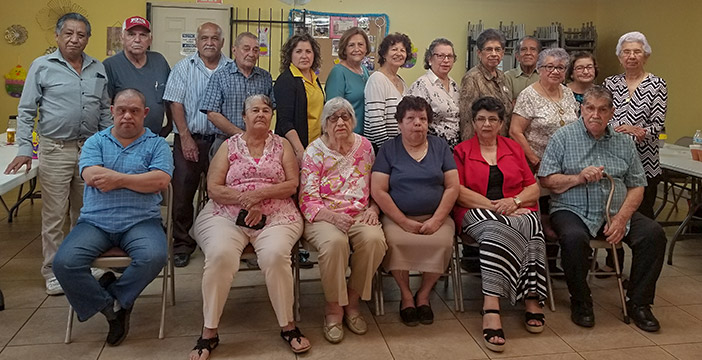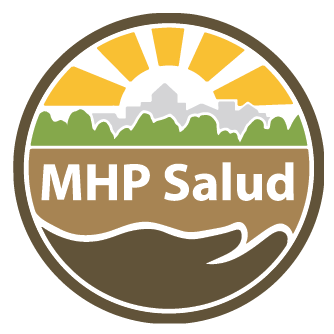Older Adult Programs
Life Stages: Aging in Place
Our older adult programs include support for seniors and utilize Community Health Workers as essential resources that allow seniors to live longer inside their own homes.
Community Health Workers and Senior Health
The number of older adults in the United States is expected to reach 71 million by 20301. As this population grows, it is also becoming more racially and ethnically diverse. In 2010, 80% of adults aged 65 years or older in the United States were non-Hispanic white. By 2030, non-Hispanic whites will comprise 71.2% of the population and the Hispanic population will have grown to 12%.2 As this population grows and changes, it is imperative to address their specific health concerns and challenges. An overwhelming number of older adults prefer to age in the comfort of their own homes.3 Under the Life Stages initiative, we help support elders in this goal by utilizing Community Health Workers to address a number of common health concerns for older Hispanic adults. By addressing these concerns, older Hispanic adults can safely age in place.
Community Health Workers and Senior Mental Health
It is important to support older adults in their quest to remain living in the home for several reasons. Not only does this align with the preferences of most elders, but it also supports their mental health. Older adults living in nursing homes/residential care facilities have higher rates of depression (37%) compared to older adults overall (20%).4 This is especially important to note, as the burden of mental health concerns is already high among older adults. About 25% of adults aged 65 years or older have some type of mental health problem, such as a mood disorder not associated with normal aging.5 Approximately 12% of adults aged 65 or older report that they “rarely” or “never” receive the social and emotional support they needed.6 Improving social connections and social support has powerful implications for improving older adults’ mental health. Community Health Workers create meaningful relationships with their program participants, providing the social connections and support that have been linked to improved mental health. Furthermore, CHWs can provide education on mental health, refer participants to community resources, and help participants make connections to their peers through group education.
About 25% of adults aged 65 years or older have some type of mental health problem, such as a mood disorder not associated with normal aging.

Community Health Workers and Senior Chronic Disease
Chronic conditions are among the leading causes of death for older adults 65 years and older. The burden of chronic disease affects all aspects of everyday life. Often, older adults experience initial difficulties with Instrumental Activities of Daily Living (IADL), such as shopping, preparing meals, or managing money. As physical functioning declines, the Activities of Daily Living (ADL) are affected, which further limits an individual’s ability to enjoy life.7 These effects are made even more severe when an individual is managing multiple chronic diseases; this is incredibly common, with 2 out of 3 older adults juggling multiple chronic illnesses.3,1 The high level of chronic disease among older adults affects both the individual’s health and also has a profound effect on national health care spending. Nationally, more than two-thirds of all health care costs are associated with treatment of chronic diseases for this population.3,1 Latinos are at greater risk of developing Alzheimer’s and dementia and are more likely to develop these diseases at an earlier age when compared to their non-Hispanic white counterparts. While the exact cause is unknown, it has been hypothesized that risk factors for vascular disease may also be risk factors for Alzheimer’s and strokes.8
2 out of 3 older adults juggle multiple chronic illnesses.31

Community Health Workers and Emergency Preparation for Seniors
Physical and cognitive impairment, such as difficulty walking or challenges relating to memory, may affect an older individual’s ability to stay safe during an emergency. This makes prior planning and support essential to ensuring the safety of this population. Community Health Workers can be a key component of helping senior citizens prepare for potential disasters or public health emergencies by helping them and their families create a comprehensive emergency preparedness plan.
Community Health Workers and Senior Health Literacy
The ability to obtain, process, and act upon health information is essential in making appropriate health decisions. An inability to comprehend this type of information is indicative of limited health literacy. Nearly 9 out of 10 adults have difficulty understanding basic health information available in common health care settings.3 The age group with the largest percentage of people who have limited health literacy is among adults 65 years and older. Older adults that do not possess a clear understanding of health-related information suffer consequences like skipping necessary medical tests, having difficulty controlling high blood pressure, and have more visits to the emergency room.9 Community Health Workers can be a vital resource in this regard, acting as trained professionals who can help educate seniors and empower them to better manage their own health.
Outcomes
After 6 months of home visits, phone calls, and opportunities to participate in group sessions, participants in this project reported a significant increase in their quality of life. Perhaps this is because they were able to strengthen healthy behaviors, in this case physical activity, as their sessions went on. Usually, individuals adapt strongly to new behaviors at first and lose interest over time. In this case, physical activity increased the most towards the end of the sessions.
These changes in lifestyle have helped participants feel less isolated and engage in activities that maintain cognition and mental agility. Additionally, with our partners at Habitat for Humanity, we completed home modifications for 64 of our participants that included installing ramps, rails, and air conditioning among other things.
Want more information on this initiative? Please contact us at info@mhpsalud.org
Resources
- https://www.aarp.org/livable-communities/learn/health-wellness/info-12-2012/Healthy-Aging-Helping-People-to-Live-Long-and-Productive-Lives-and-Enjoy-a-Good-Quality-of-Life.html
- US Census Bureau. US Population Projections. US Census Bureau Web site. http://www.census.gov/ population/www/projections/summarytables.html.
- AARP, 2010
- American Psychological Association
- Centers for Disease Control and Prevention, National Association of Chronic Disease Directors. The State of Mental Health and Aging in America Issue Brief 1: What Do the Data Tell Us? Atlanta, GA: National Association of Chronic Disease Directors; 2008.
- McGuire LC, Strine TW, Okoro CA, Ahluwalia IB, Ford ES. Modifiable characteristics of a healthy lifestyle in U.S. older adults with or without frequent mental distress: 2003 Behavioral Risk Factor Surveillance System. Am J Geriatr Psychiatry. 2007;15:754-761.
- https://www.cdc.gov/aging/pdf/State-Aging-Health-in-America-2013.pdf
- https://www.alz.org/espanol/about/latinos_and_alzheimers.asp
- Rudd RE, Anderson JE, Oppenheimer S, Nath C. Health literacy: an update of public health and medical literature. In: Comings JP, Garner B, Smith C, eds. Review of Adult Learning and Literacy. Vol 7. Mahwah, NJ: Lawrence Erlbaum Associates; 2007

